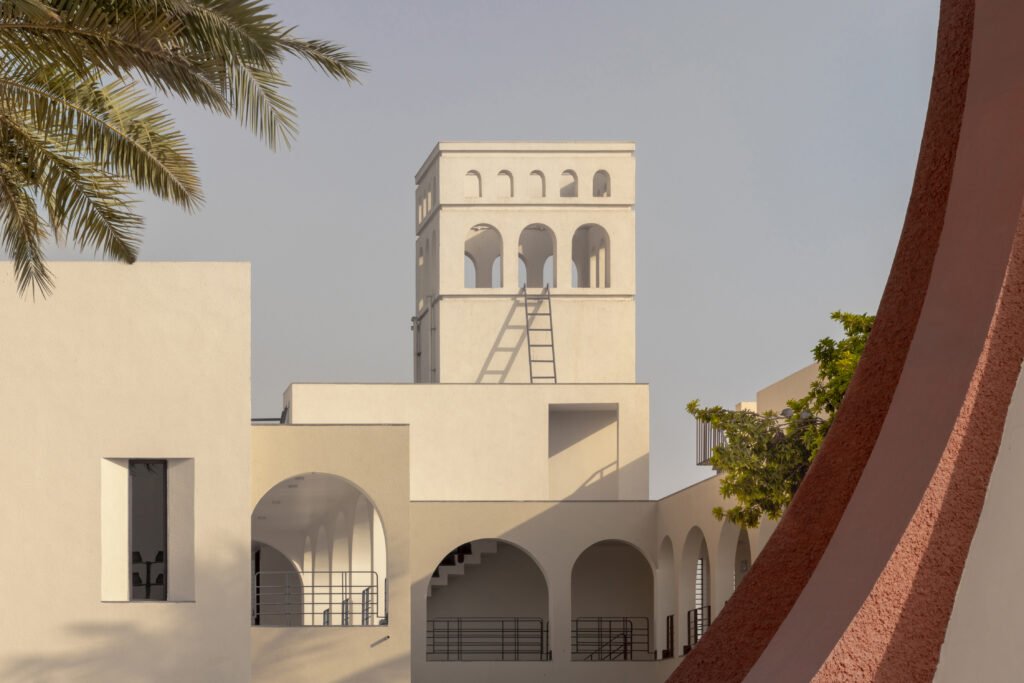

How can architecture balance the preservation of sense of place and community identity while introducing contemporary design elements to create spaces that are both contextually significant and widely meaningful?
Architecture often finds its essence not in the grand or the monumental but in spaces that inspire belonging, community, and harmony with their context. The 16,000 sqft ashram at Nardipur, near Adalaj village in Gandhinagar, embodies this philosophy by weaving the natural environment, cultural memory, and architectural forms into a seamless experience for its visitors. Designed with reverence for its history and environment, the ashram evolves as a meditative retreat, where the landscape and built forms engage in a quiet dialogue.
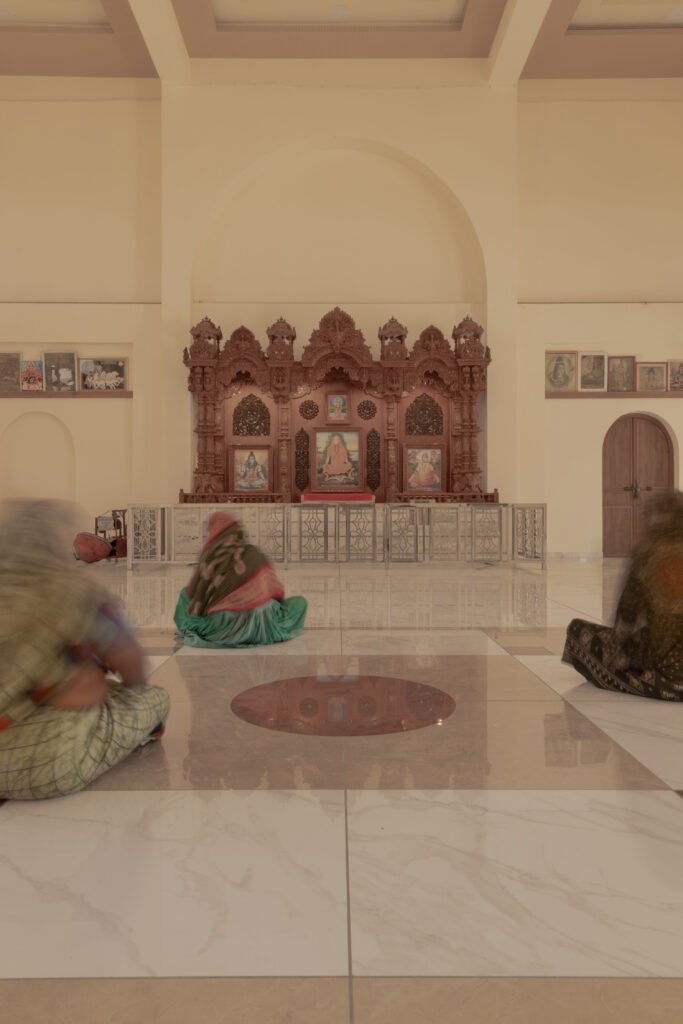

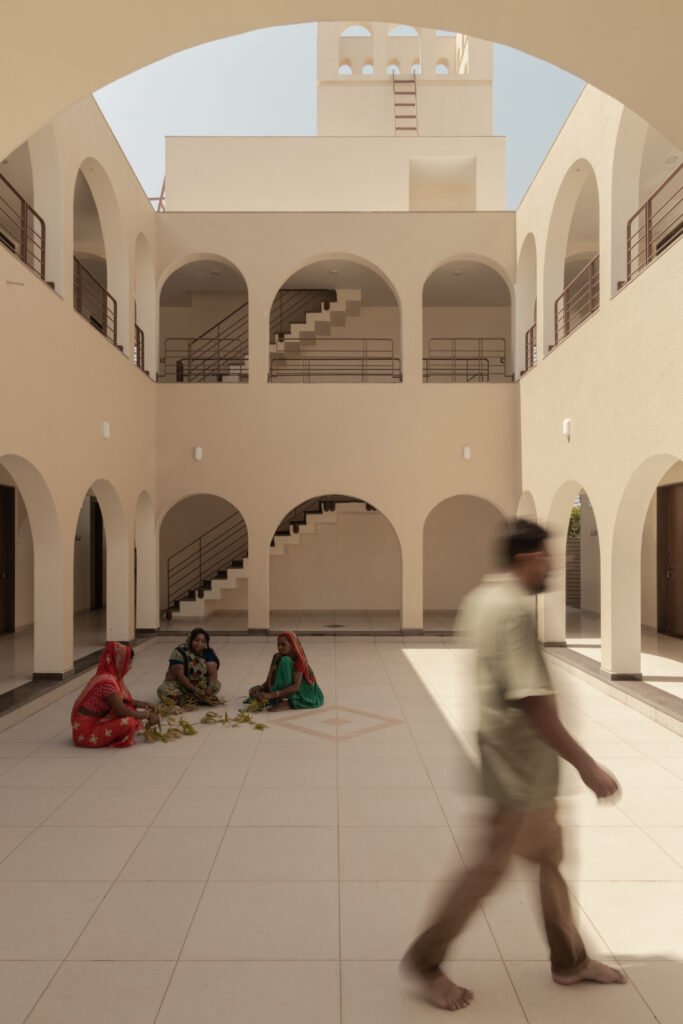

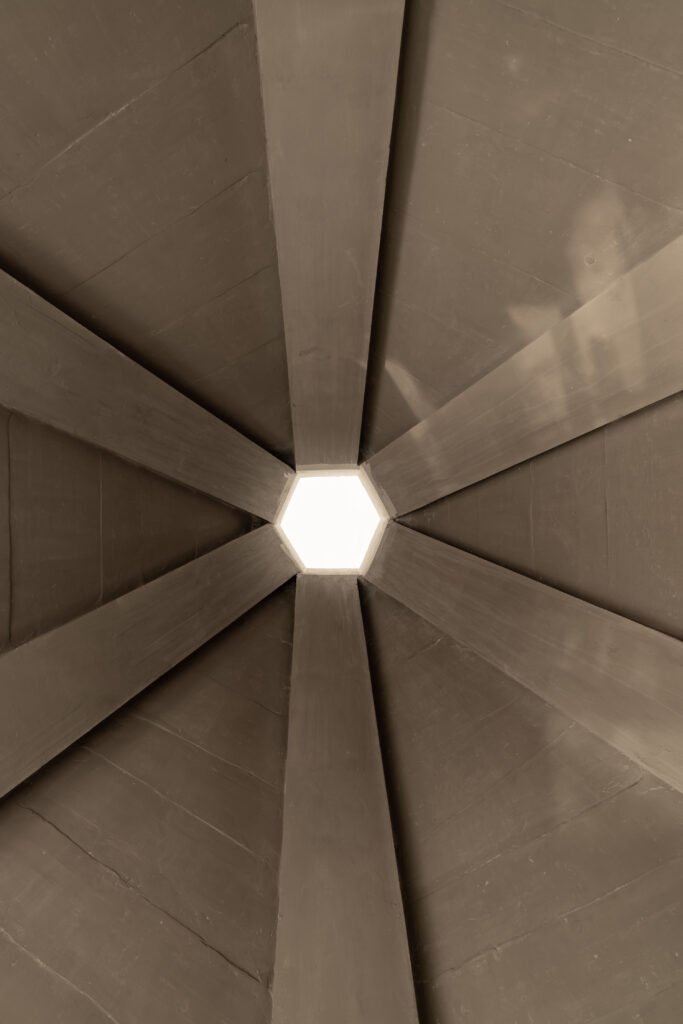

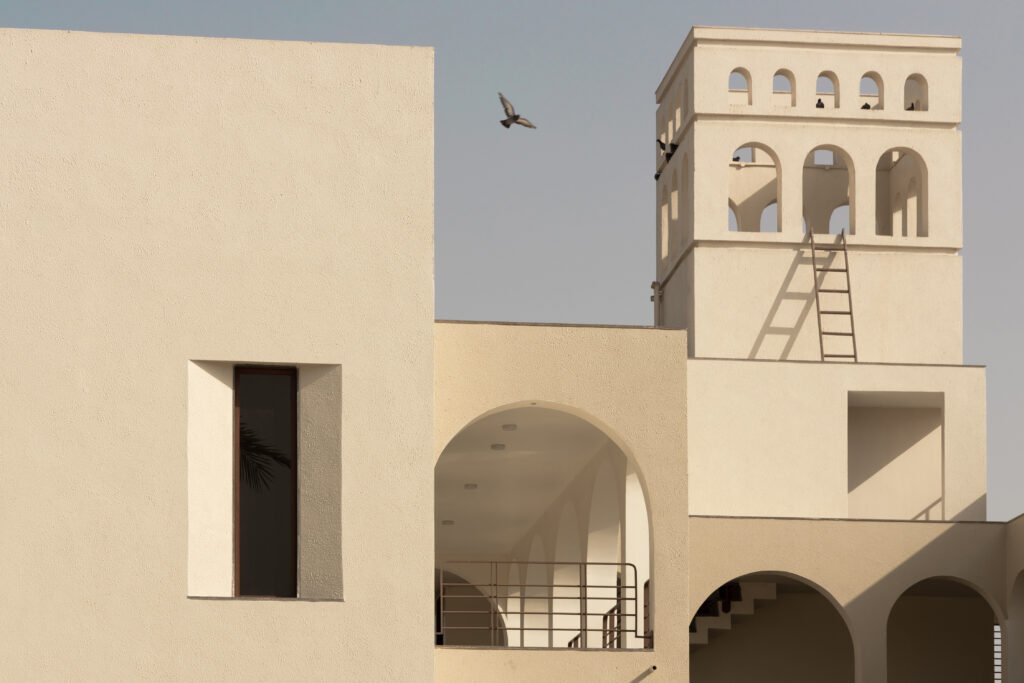
The entry is marked by a buffer zone that acts as a pause point, gently transitioning visitors inward. The entry pathway is the ashram’s first architectural gesture, retaining the existing bougain villea canopy that arches over the path. This natural feature, preserved and celebrated,creates an immersive journey that evokes a sense of serenity and anticipation. It leads visitors toward the prayer hall, revealing glimpses of the ashram’s architecture while maintaining an intimate connection with the surrounding nature. The lush landscape—dotted with chikoo trees orange, sitafal and coconut trees as well, and an ecosystem of birds and bees—is not just incidental but integral, safeguarded as a key design principle. The ashram respects this ecosystem, ensuring no greens were removed and that the site’s inherent biodiversity thrives.




